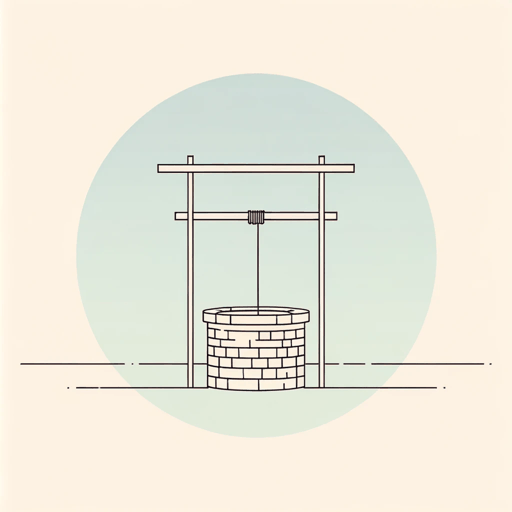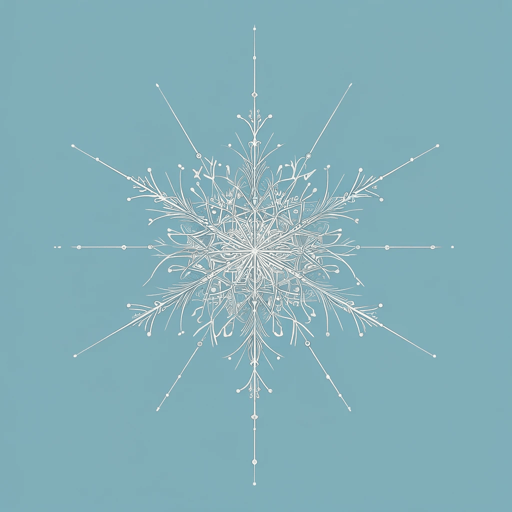71 pages • 2 hours read
Orhan PamukMy Name is Red
Fiction | Novel | Adult | Published in 1998A modern alternative to SparkNotes and CliffsNotes, SuperSummary offers high-quality Study Guides with detailed chapter summaries and analysis of major themes, characters, and more.
Summary and Study Guide
Overview
My Name is Red (originally titled Benim Adim Kirmizi) is a 1998 historical novel by the Nobel Prize winning Turkish author Orhan Pamuk. Set in late-16th century Istanbul, the novel explores cultural tensions stemming from contemporary philosophical understandings of visual art. Told from the viewpoints of many different animate and inanimate characters—including Muslim and Jewish individuals, a corpse, the color red, and paintings of a horse, a devil, and a dog—the novel integrates elements of a wide range of genres, incorporating murder mystery, romance, tales of political intrigue, and nested stories, or layers of interrelated narratives.
This internationally recognized novel has won a number of prestigious prizes, including the French Prix Du Meilleur Livre Étranger and the International Dublin Literary Award. Orhan Pamuk was also awarded the Noble Prize in Literature in 2006.
This study guide references the English translation by Erdağ Göknar, published by Vintage International in 2001.
Plot Summary
Set in the Ottoman Empire in 1591, the first chapter of My Name is Red is told from the viewpoint of a murdered miniaturist named Elegant Effendi, whose body lies at the bottom of a well in Istanbul. Without revealing the identity of his killer, Elegant’s corpse speaks directly to readers, speculating that his murder is linked to an attempt to discredit traditional Muslim beliefs about the purpose and creation of artwork. As the story progresses, different characters, objects, and paintings take up the narration, with each chapter often shifting between the central plot and related philosophical musings.
Black, a civil servant who has been absent from Istanbul for 12 years, returns to his home shortly after Elegant’s murder. There, he renews his relationship with his uncle, Enishte Effendi, a book dealer, and with his cousin and love interest, Shekure. Both of Black’s relatives are struggling. Enishte has been commissioned by the Sultan to employ a group of miniaturists to create a book of paintings in the European style (Elegant was one of these artists). However, depicting the world realistically makes the book’s artwork heretical, so Enishte strives to keep this project a secret. Shekure, the mother of two young boys, has been awaiting her soldier husband’s return for four years and believes he is dead. However, as her husband’s body has never been recovered, Shekure is still considered married and cannot wed again. Originally, Shekure stayed at her in-laws’ home, but there, her unwed brother-in-law sexually harassed her and made her uncomfortable. Recently, Shekure and her sons have returned to her father’s home, where she remains in a state of confusion, uncertain if she should continue to wait for her husband’s return or seek out a new man to marry.
Shekure, who is secretly romantically interested in Black, sends him notes through Esther, a professional intermediary and peddler; the cousins soon strike up a correspondence. Meanwhile, Black meets frequently with his uncle, who is distraught over Elegant’s murder and desperately needs to finish the Sultan’s secret book. He asks Black for assistance, and Black agrees to speak with the head of the miniaturists’ workshop, Master Osman. At the workshop, Black learns the names of the miniaturists working on Enishte’s book and visits each in turn to question them about their approach to art. Each artist provides Black with stories conveying their individual artistic styles, the links between time and painting, and the value of artistic blindness.
Elegant’s body is finally discovered, and a large funeral is held. All of the major male characters attend the funeral, including the murderer, who openly weeps at Elegant’s graveside. After the funeral, Enishte convinces Black to write the text for the secret book. Shekure sends Black a note telling him that he needs to complete her father’s manuscript if he wants to win her love and hand. She also asks him to meet her secretly.
While Shekure and Black meet and passionately embrace, the murderer visits Enishte and, after admitting he killed Elegant, bashes in Enishte’s head with a pot of red ink. When Shekure returns home, she finds her father’s body and decides to keep it a secret from her children and the community for the time being. She again meets with Black and tells him she will marry him but will not consummate their wedding until Black has finished her father’s book and found his killer. Black bribes the authorities to provide Shekure with a divorce and allow them to marry. Their wedding ceremony takes place that same day and the couple pretends Enishte is still alive to give legitimacy to the proceedings.
Following their marriage, Shekure and Black sleep apart and are woken by her former brother-in-law, Hasan, who has come to declare their marriage invalid. Hasan also begs Shekure to return to his home. Shekure refuses and Black accuses Hasan of killing Enishte. The next morning, the new couple announces Enishte’s death and Black travels to the Sultan’s palace and tells the Head Treasurer of the murder and the secret book.
The Head Treasurer summons Master Osman and tells him that all the miniaturists and Black are now suspected of murdering Enishte. The Sultan is upset by Enishte’s murder, wants to find the culprit, and will sanction torture if necessary.
Esther discovers that Elegant’s widow found a paper with sketches of horses on her dead husband’s body. As Elegant was a gilder, the drawings were not done by him and are likely the work of the murderer. The widow passes the drawings to Shekure. Meanwhile, Black is summoned to the Sultan’s palace, where he is briefly tortured and then instructed to work with Master Osman to discover the murderer. The two men examine the secret book’s illustrations to identify the murderer’s style and match his work but have no success. Shekure sends a letter to Black along with the drawings of the horses, which have oddly shaped nostrils. However, when Master Osman and Black cannot find similar horses in the book, the Sultan sets up a contest, asking each of the miniaturists to draw a horse. Stork, Butterfly, and Olive each sketch a horse, but none of their drawings match those found on Elegant’s body.
Master Osman requests permission to examine the manuscript collections housed in the Sultan’s treasury. Hoping to find other artists using a similar technique, the master believes, will allow them to pinpoint the miniaturist who killed Elegant and Enishte. The men spend the day and following night studying the illustrations. Master Osman is more interested in viewing the artwork than in finding the murderer, in part because he fears the artistic world he loves is ending. When he discovers the needle used by a famous past master to blind himself, Osman sticks the needle into his own pupils, which causes him to slowly go blind. Shortly afterward, Black finds a picture of a horse with strange nostrils. Although unable to see clearly, Osman tells Black the image is drawn in the Chinese style, which is the style used by Olive. Osman, however, believes that Stork is most likely the murderer because Olive respected the traditional methods he learned while studying with Osman.
Black grows worried when Shekure and her sons are not at their house. After learning that Shekure was tricked into returning to Hasan’s home, Black takes a group of men with him to attack the house. He eventually convinces Shekure to return to him after agreeing to her demands, including the discovery of her father’s killer.
Black again visits each of the three miniaturists and searches their homes for the secret book’s final missing illustration. After discovering that Olive is not at home, Black joins forces with Stork and Butterfly. They finally confront Olive at an abandoned dervish lodge. Olive admits to the murders of Elegant and Enishte and shows the group the final illustration for the book, which depicts not the Sultan, but Olive himself. Black blinds Olive but is severely injured as Olive flees the lodge. In his flight, Olive encounters Hasan, who, believing that the miniaturist was involved with the attack on his home, beheads Olive.
In the final chapter, Shekure reveals that Black lives for another 26 years but is always melancholy despite their marriage. The secret book commissioned by the Sultan remains unfinished and Stork becomes master miniaturist after Osman’s demise.
Related Titles
By Orhan Pamuk
Featured Collections
Appearance Versus Reality
View Collection
Art
View Collection
Beauty
View Collection
Globalization
View Collection
Guilt
View Collection
Middle Eastern Literature
View Collection
Nobel Laureates in Literature
View Collection
Pride & Shame
View Collection
Teams & Gangs
View Collection
The Future
View Collection
The Past
View Collection
Valentine's Day Reads: The Theme of Love
View Collection





